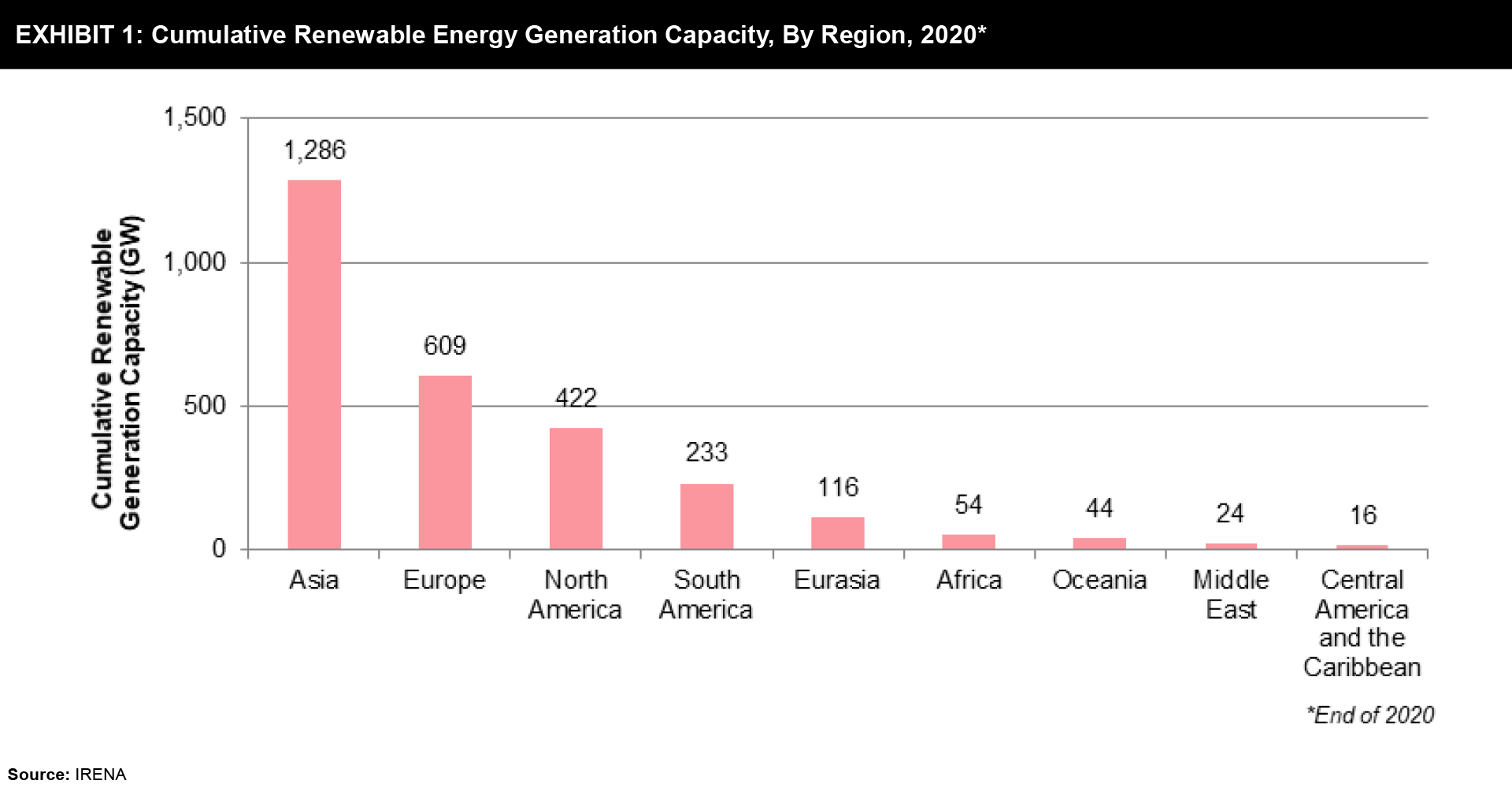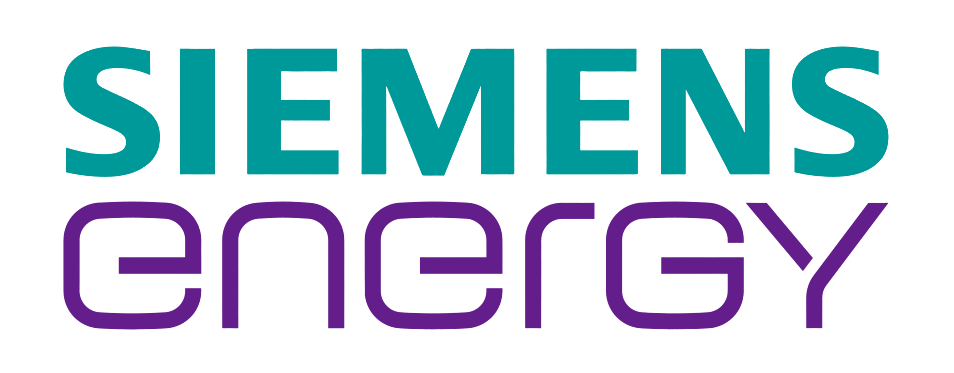Fossil fuels, including Coal, Natural Gas, and Oil, release large amounts of carbon dioxide. These emissions are trapped in the atmosphere and result in climate change. To date, there has been a significant dependence on fossil fuels for power generation. As per BP Statistics, the share of fossil fuels in the total final energy consumption is expected to decline to 30-50% by 2050 compared to 77% in 2020. However, considering the impact of GHG emissions on the environment, the focus is shifting towards renewable energy. Renewable energy is derived from clean natural energy sources like sunlight, wind, tidal waves, biomass, and thermal energy stored in the Earth’s crust.
Moreover, these energy sources are abundantly available and accessible in some form in many geographies. Furthermore, renewable energy helps reduce energy imports and the usage of fossil fuels. Therefore, countries across the globe are considering renewable energy as an essential anchor which will aid in the energy transition, i.e. shifting from fossil-based systems to renewables. This is further made clear by the 170 countries that pledged to harness their renewable energy potential by submitting their Nationally Determined Contribution (NDCs) targets as a part of the Paris Agreement 2015.


Asia
Asia is leading at the forefront in integrating renewable energy sources. In 2020, Asia’s solar and wind energy installed capacity reached 408.7 GW and 340 GW, respectively, with China, India, and Japan being key countries in the Asia region. Many countries have already expanded their energy infrastructure to use hydropower since it is the cheapest form of renewable energy for electricity production. China has generated the highest amount of hydroelectric energy in recent years. In addition to this, China also added 52 GW of newly installed wind capacity in 2020. The ASEAN (Association of Southeast Asian Nations) countries target a 23% share of renewable energy in their total primary energy supply and a 35% share in installed power capacity by 2025. Technologies such as floating solar, offshore wind, hydrogen storage, and battery storage are being deployed across many Asian countries.
Australia
Australia’s total installed renewable energy capacity was approximately 35.7 GW in 2020. In 2021, renewable energy generation accounted for 32% of the total electricity generation, with wind and solar being the major sources. Large scale solar generation is increasing in Australia, with ~7GW of grid-connected large-scale solar farms as of March 2021. Tasmania was the first Australian state to achieve 100% renewable energy consumption in 2020. The total installed wind power generation capacity in Australia is expected to reach 23 GW by 2030. In addition, steady progress was achieved in the battery storage sector by commissioning the 300 MW/450 MWh Victorian Big Battery project.
North America
Currently, North America relies on thermal (nuclear, gas and coal) energy, with a significant contribution from wind and solar. According to the North American Renewable Integration Study (NARIS) conducted by the Canadian Renewable energy Association (CanREA), solar and wind energy shall contribute approximately 90 to 95% of the electricity generation by the grid between 2021 and 2050 in Canada and the US. This will be driven by a significant cost reduction in solar and wind technologies, the deployment of hydropower and energy storage technologies, expansion of transmission systems, and operational flexibility of hydropower and thermal generators to overcome the variability of renewable energy sources.
Europe
The total renewable energy installed capacity in 2020 was 535 GW, as per the European Commission, out of which 133 GW was from solar, 216 GW from Wind, 134 GW from hydro, and 52 GW from bioenergy. The European Union has set a target to achieve 50% of its electricity consumption from renewable energy sources by 2030, out of which solar and wind energy will be major contributors. The large-scale integration of renewables is expected to be driven by increased interconnection capacity and innovation in energy storage systems.
Africa
Approximately 3% of the total renewable energy installed globally is installed in Africa. South Africa led with 17 GW of installed capacity in 2020 of the total renewable energy generation, and North Africa followed this with 12.6 GW. Around 2.6GW renewable-based generation capacity was added in 2019-2020, out of which 48% was from solar energy, 24% from hydropower, and 28% from wind. Countries such as Nigeria, Cameroon, Ghana, Egypt and South Africa have significant renewable energy potential in Africa. Africa focuses on integrating renewables into the grid by addressing the intermittency of Variable Renewable Energy (VRE) through energy storage technologies. Additionally, the World Bank approved an investment of USD 465 million for the Battery Energy Storage Technologies (BEST) project, which will increase renewables integration in West Africa.
Middle East
The Middle East region had an installed capacity of 24.07 GW of renewable energy in 2020, and it is expected to reach 60 GW by 2027. Solar energy is expected to grow significantly in this region owing to the hot climatic conditions. According to the International Renewable Energy Agency (IRENA), the total solar installed capacity in the region was ~7GW in 2020. The key reasons driving the integration of solar energy with the grid include a decrease in prices of solar panels, technologies for improving the performance and reliability of solar modules (high-efficiency bifacial modules, half-cut cells, perovskite solar cells, and heterojunction cells), and deployment of emerging solar technologies such as floating solar, building integrated photovoltaic (BIPV) and organic thin-film photovoltaic.
Latin America
Out of the total primary energy supply in this region, the share of renewable energy in Latin America is approximately 26%. In 2020, this region’s total renewable energy capacity was around 280 GW, with hydropower and biofuels being the major sources contributing ~79% of renewable energy generation. Although hydropower and biofuels are major contributors, Latin America also focuses on other renewable energy sources like wind and solar for grid integration.
Integration with the Grid
Grid integration includes effective ways of providing variable renewable energy (VRE) to the grid. While maintaining or increasing the system stability, robust integration methods maximize the cost-effectiveness of adding variable renewable energy into the power system. It also incorporates renewable energy, energy storage technologies, demand response, and distributed generation into the power distribution and transmission system. Renewable energy sources such as solar and wind tend to be variable with respect to time.
Challenges with Grid Integration
The following challenges are met when integrating renewable energy into the grid:
Intermittency
Renewable energy does not always provide electricity at the same time every day. During peak times, the energy production of solar and wind farms in Europe has been found to fluctuate between 0to 23 GW and 0 to 24 GW, respectively. In addition, even though solar energy may be available in abundance in many places, cloud cover, rains, dust storms, etc., can cause significant variations in solar output.
The increased cost of transmission
Driven by generation capacity, transmission location, and demand fulfillment, the development of transmission systems for renewable energy sources will become complex concerning technology and cost allocation. Transmission costs are much higher for offshore wind energy resources, which require more advanced technologies than land-based transmission lines. This poses a significant challenge in integrating renewable energy sources into the grid. Distributed energy resources can be deployed to overcome this issue, wherein energy is generated and used locally on a micro-grid, thus avoiding line losses and the high capital cost of transmission lines.
Maintaining system reliability and stability
As renewable generation technologies become more widely used, system operators will face new challenges in maintaining the system’s stability and reliability. Renewable production is less predictable, controlled, and synchronous. System operators must rethink their reserve, response, and other ancillary service requirements and find new sources to meet these needs.
Emerging Technologies
Energy storage
Energy storage plays an important role in balancing grid supply and demand when integrated with renewable energy. Deployment of large-scale energy storage technologies provides front-of-the-meter services, including generation support and grid support. Deployment of energy storage technologies also enables renewable energy time-shift and renewables capacity firming. In addition to this, energy storage manages peak load demand, improves power quality, manages distributed power generation, and reduces energy import during peak demand periods. Energy storage is deployed on a large scale in the form of large-scale battery energy storage systems. Battery energy storage installed capacity stood at 17GW in 2020 and is projected to reach 600GW by 2050.
Virtual Power plants
A virtual power plant is a power plant interface created through software, which acts as a central entity that combines, manages, and controls distributed energy resources, moving power plants (e.g., Electric Vehicles), and renewable energy resources. Electricity is generated by these energy sources and transmitted to the grid. These virtual power plants enable small energy producers to participate in energy markets, net metering, and enhance the grid performance.
Hydrogen storage
Globally, many countries are focusing on developing clean hydrogen produced from wind and solar energy as it can play an important role in grid integration. Hydrogen can be stored and used as a fuel or as an energy carrier to balance variable energy flows. Many countries have rolled out policies and targets for boosting the development of hydrogen storage technologies. The traditional storage methods may not be directly applicable for storing hydrogen as a fuel, owing to safety, economy, efficiency, flexibility, environmental standards, etc. Therefore, research and development on hydrogen storage focus on identifying low-pressure, material-based technologies. Some of these technologies like Borohydrides, Amide/imide mixtures, Liquid organic hydrogen (LOH), and Metal-organic frameworks (MOF) have a high potential for storing large quantities of hydrogen.
Conclusion
Renewable energy sources have gained popularity as a result of their long-term viability and low environmental impacts. With rising energy demand and declining fossil fuel reserves, a focus on developing environmentally acceptable energy systems and expanding renewable energy penetration has been placed. The rising availability of low-cost variable renewable energy (VRE), distributed energy resource deployment, digitization developments, and increased electrification potential drive substantial changes in power systems worldwide. Renewable energy integration offers energy security, improved efficiency, and demand-side management, thereby enhancing the grid’s resilience. A variety of technology options are available that can aid in renewable energy into power systems. In addition, significant advancements in wind and solar technologies would enable them to be used in a wider range of conditions. However, in the long run, power systems with a higher share of variable renewable power generation will necessitate rethinking traditional operations, designs, and planning practices from economical and technical viewpoints.
References
- REmap 2030 – A Renewable Energy Roadmap
- Renewable Energy and Climate Pledges
- Report on “Integration of variable renewables in the energy system of EU and China
- Middle East North Africa Solar and Renewable Energy report
- Integrating Renewable Energy Resources into the Smart Grid
- Clean Energy Australia Report
- FutureBridge Energy Insider Reports
Need a thought partner?
Share your focus area or question to engage with our Analysts through the Business Objectives service.
Submit My Business ObjectiveOur Clients
Our long-standing clients include some of the worlds leading brands and forward-thinking corporations.
- © 2021 Cheers Interactive (India) Private Limited. All rights reserved. FutureBridge ® is a registered trademark of Cheers Interactive (India) Private Limited.




































